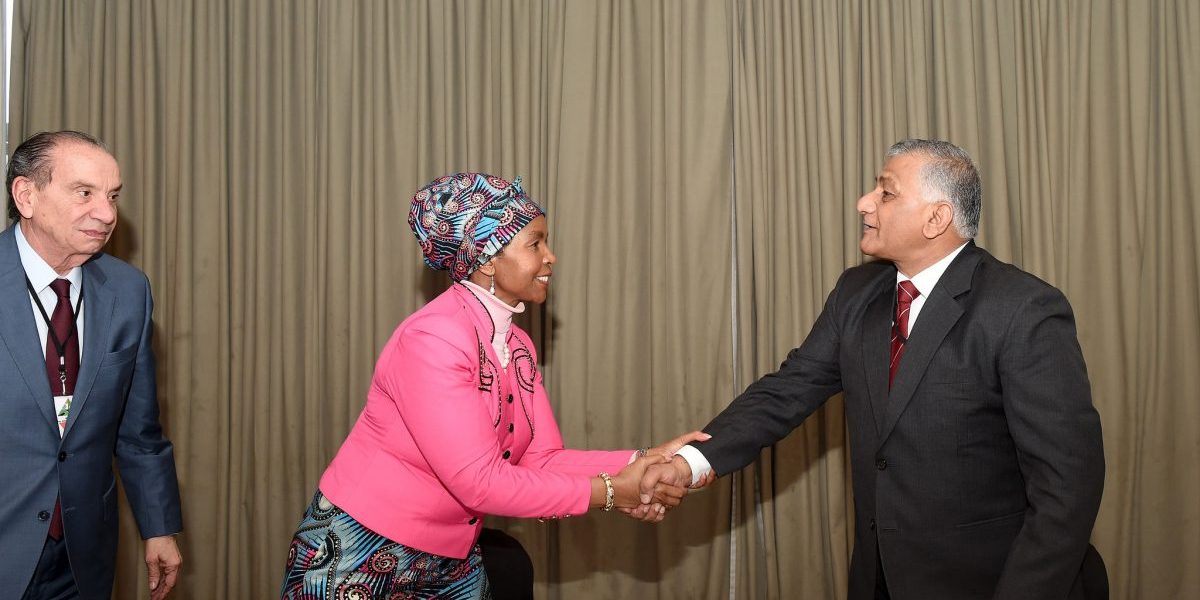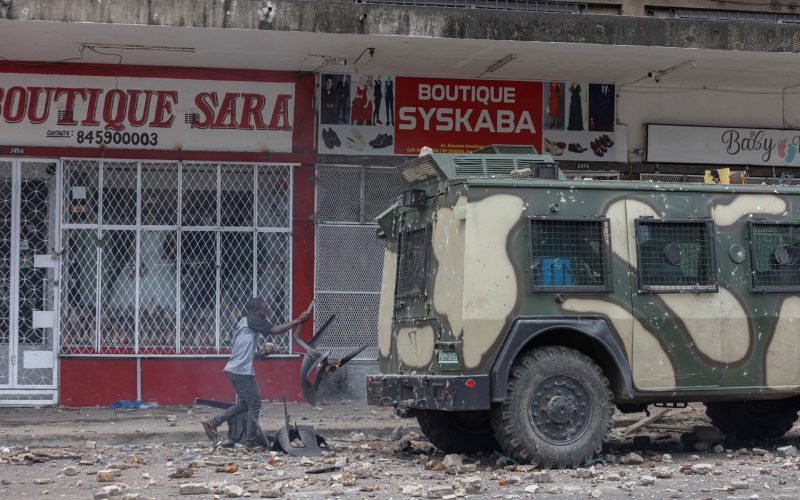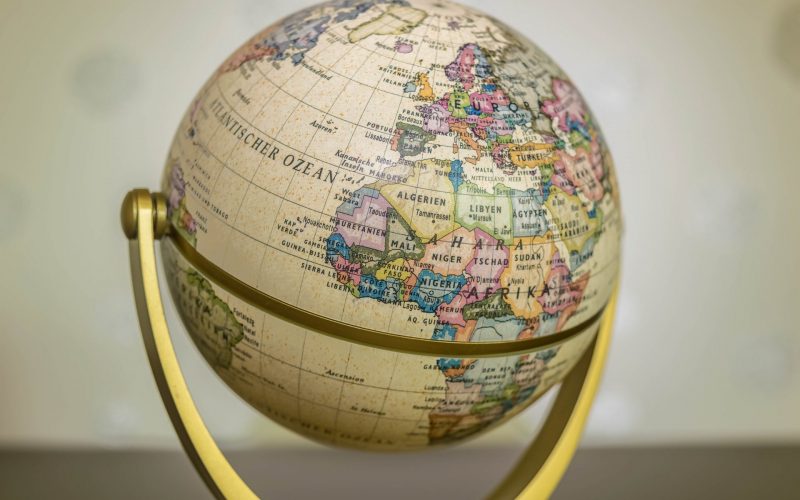Having concluded a preferential trade agreement with Mercosur, the South American bloc that includes Brazil, Argentina, Uruguay, Paraguay and a range of associate members, South Africa – under the guise of the Southern African Customs Union (Sacu) – is preparing for negotiations with both China and India.
What is more, there is talk of a trilateral free trade agreement between India, Brazil and South Africa (Ibsa) to follow on from existing bilateral initiatives and add substance to this latest version of South-South co-operation. But South Africa is not ready for trade agreements of this nature.
The agreement signed with Mercosur is a heavily watered down version of the free trade agreement initially envisaged some years ago. This is due to the simple fact that these two unlikely trade partners are staunch competitors in international markets and, frankly, Mercosur producers outcompete their South African counterparts in most sectors.
The result is seen in the trade balance between South Africa and Mercosur. Exports from Mercosur to South Africa are five times greater than South African exports to that market.
And while South Africa continues to export basic commodities to Mercosur, value-added manufactured products are starting to dominate exports from Mercosur to South Africa. This scenario is expected to be infinitely worse when it comes to China and India.
So why should trade determine the success of South-South co-operation when there is little or no clear complementary trade potential between these so-called equal partners?
There are other areas of co-operation that seem far more inviting and are achieving some success in forums such as Ibsa. But the reality of this partnership needs to be understood before the opportunities can be maximised.
Contrary to popular belief, Ibsa is not a coalition between three countries of similar economic and social dimension. India has a population of 1.1 billion people, while Brazil’s population is about 180 million and South Africa’s is 43 million.
The economies of India and Brazil are roughly the same size at about $600 billion (R4 trillion) and $500 billion, respectively. But South Africa’s economy is far smaller at $160 billion.
This scenario is reversed in terms of per capita income, where South African individuals are nearly four times as wealthy as their counterparts in India. Brazil hovers somewhere in between.
Brazil’s debt exceeds $250 billion – more than 50 percent of its gross domestic product (GDP) – while the value of South Africa’s debt is about $28 billion and India’s is about $100 billion, or less than 10 percent of its GDP.
In terms of total trade, once again Brazil and India are on a par – with trade of about $130 billion – but South Africa’s total trade barely exceeds $70 billion. Foreign investment is widely disparate, with India exceeding $10 billion, Brazil just below $5 billion and South Africa barely making $1 billion.
The countries’ poverty indices are also troubling. In terms of income distribution, there are great disparities in Brazil and South Africa, which measure 59.3 and 57.8, respectively, on the Gini index, where 100 means absolute inequality and 0 means absolute equality.
India fares better at 32.5 but is quite low on the UN human development index, ranking 127th out of 177 countries. South Africa plunged 35 places to 120th, primarily because of the devastating effects of HIV/Aids on lowered life expectancy, while Brazil occupies 63rd place.
But the Ibsa countries certainly do share the same interests, skills and needs. All three are grappling with the common challenges of poverty alleviation, economic development and social equity.
And all three are leading nations of the South, respected examples of vibrant and progressive democracies in the developing world. There is a clear need to learn more about and from each other and eventually extend this learning to others in their regions.
In the short time since its creation just over two years ago, Ibsa has recorded some significant achievements. Given its critical mass of well over 1.3 billion people and a combined economy of $1.26 trillion, not to mention its political influence in the developing South, it is little surprise that the most notable success has been in the multilateral arena, the WTO in particular.
Ibsa formed the hard core of trust in the Group of 20 (G20) coalition of developing nations at the last round of trade talks in Cancun. The G20 effectively ended the talks and altered the broader trade agenda by placing the needs of the developing world at the centre of negotiations.
Ibsa and the G20 are expected to deliver much the same impact at the sixth WTO ministerial meeting in Hong Kong this December.
On the direct trilateral front, various working groups have been set up as a result of an agreed action plan and most have signed memorandums of understanding.
The most advanced of these include science and technology, which was identified as a “real strength in Ibsa”, bioenergy and renewable energy resources, health – focusing co-operation on Aids, tuberculosis and malaria – and education.
Air and maritime transport are also high on the agenda in an effort to create direct and efficient commercial links between Ibsa countries. Culture, tourism and the information society have also made some ground in recent months.
The development agenda and experiences of economic reform feature prominently under Ibsa’s new thrust of economic development and social equity.
Members are also aware of a developing core and periphery emerging from the South. There is a growing sense of exclusion among some of the smaller developing countries that have long been marginalised from the global system, which Ibsa is perceived to be a part of.
Ibsa has therefore created a development fund geared to assist the most impoverished countries of the South. Modest in size with only $1.3 million currently available, though each country has vowed to pledge $1 million a year, the programme is up and running. The first project is under way in Guinea Bissau and others are planned for Haiti, Laos and Palestine.
This constructive and hands-on approach to development is what makes Ibsa different from previous examples of South-South dialogue. Such initiatives failed to deliver tangible results, due largely to an amorphous membership with diverse interests.
Ibsa may find difficulty in establishing a trilateral free trade zone, but a trilateral coalition of this nature offers more than just trade.
Ibsa’s ability to chart a new course for South-South cooperation will be determined through constructive engagement in areas of energy, health and education, which will no doubt deliver commercial incentives in the long run, combined with a focus on poverty alleviation, economic growth and development.
Despite their vast differences in land mass, population and social profiles, the Ibsa countries are finding real areas of complementarity and are making slow but steady progress.
After all, one should not forget that Ibsa is just one of many instruments available to deepen South-South co-operation and encourage socioeconomic and political integration.
The current juncture of international relations imposes greater pressures on developing countries to conform to the dictates of a liberal global order.
There is thus an even greater imperative for developing countries to forge closer strategic and institutional alliances in order to improve their existential condition, especially with regard to meeting the twin challenges of poverty and development.
South-South co-operation has for too long found itself in a desultory state. Ibsa holds out the promise of being an incubator of a new approach that could enhance and consolidate a more robust southern platform.






